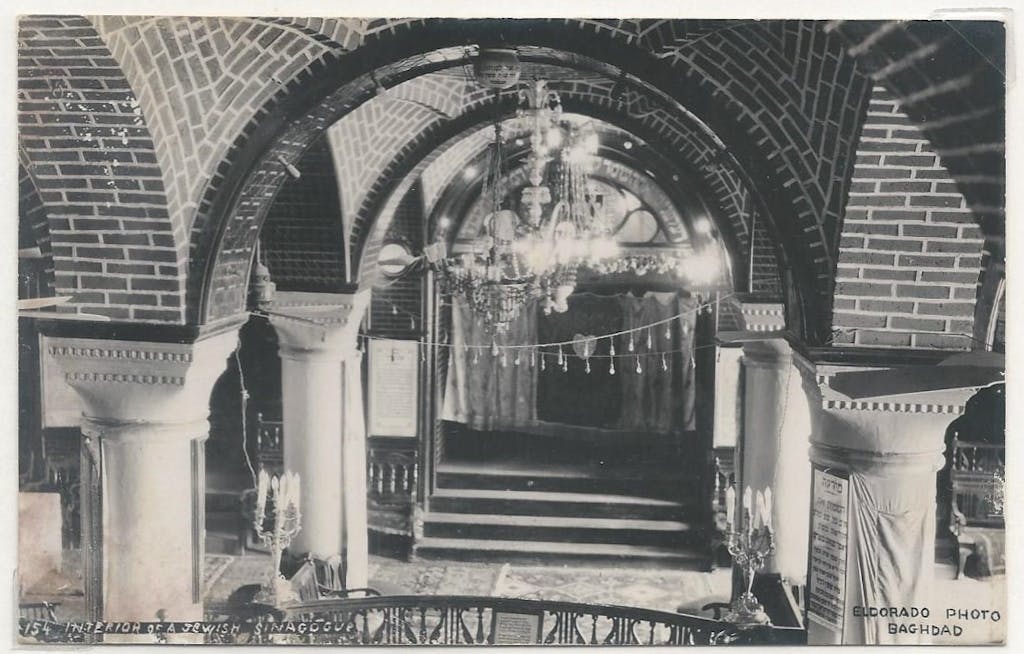Over two days of violence in 1941, the Jews of Baghdad faced a violent pogrom at the hands of pro-Nazi supporters. Despite being victims of such antisemitism and persecution, the victims of the Farhud (meaning ‘pogrom’ or ‘violent dispossession’) are not considered Holocaust victims. In this blog, we will explore what happened, how their victimisation fits within the broader definitions of the Holocaust, and how the Farhud is remembered today.

What happened?
The Jewish community living in the regions we know today as Iraq existed since the 6th Century. Despite sharing aspects of Arabic culture, their assimilation with surrounding Muslim and Christian communities was rare. In 1921, when the British established the Iraqi state, Jews were given full citizenship rights. In the 1940s, there were around 135,000 Jews living in Iraq, accounting for around 3% of the total population.
In the Spring of 1941, many states such as Syria, Lebanon and Egypt were generally supportive of an Axis victory because of their desire for autonomy from British authorities. In Iraq, anti-British nationalist, Rashid Ali al-Gaylani, had successfully carried out a military coup on 2 April 1941. He hoped an Axis victory in the war would facilitate full independence for Iraq.
But this take-over worried the Jewish population, as there was already widespread antisemitism and support of Nazism in Iraq. Hitler’s ‘Mein Kampf’ had been published in Arabic in the 1930s, and Nazi propaganda was regularly aired on local radio.
In response to concerns that there would be widespread revolt in the Middle East, which could threaten the lucrative and important oil supplies needed for the Allied war efforts, British forces took control of Iraq in May 1941. However, as they didn’t wish to be seen as interfering with Iraqi affairs, they allowed Iraqi forces who supported the British to enter the towns and cities first. They hoped this tactic would allow them to win over local areas under Rashid Ali al-Gaylani’s influence.
But this policy backfired and led to widespread looting. In Baghdad, the Jewish community who were beginning to feel more secure with al-Gaylani’s pro-Nazi government being deposed, began to celebrate Shavout (the Jewish festival of harvest). The threat had not passed however, and the looting and rioting soon shifted to targeting the Jewish community. Those loyal to al-Gaylani’s government and who supported the Nazis incited these riots. Many civilians also joined in with the violence.
Over two days on the 1st and 2nd June 1941, the Jewish community was violently attacked in Baghdad.
It is estimated that up to 180 Jews were killed and hundreds injured. Many women were also raped. As many as 1,500 businesses were looted, while 2,500 families’ homes were directly affected.

Order was re-established when the Iraqi forces retook the city, and many perpetrators of the pogrom were killed. Many Iraqi Jews, particularly those from Baghdad, left the country to find refuge elsewhere after the Farhud. Some returned and enjoyed prosperity during the British occupation of Iraq. But almost no Jews remain in Iraq today.
Are the victims of the Farhud also Holocaust victims?
Those who died in the Farhud are not considered victims of the Holocaust, because nearly all definitions of the Holocaust argue it was genocide on European soil only. This echoes other instances where Jewish communities were targeted by the Nazis and their collaborators during the Nazi occupation of Northern Africa.
But definitions of the Holocaust, and who were victims of this genocide, are not static. Many organisations, such as ours, define that the Holocaust was a genocide against Jews, during the years 1933-1945 by the Nazis and their collaborators on European soil, which escalated from violence and discrimination to full-scale extermination. But some scholars and survivors, such as Michael Burleigh and Elie Wiesel, have wondered whether the Holocaust was solely a Jewish genocide or whether other victims of Nazi persecution should be included under the term ‘the Holocaust’. This indicates that there is significant nuance to the period, and variation of opinions among experts and witnesses.
Is it time that we expand the definition of the Holocaust to be more inclusive? The victims of the Farhud were killed due to their Jewish identities during the years 1933-1945 by collaborators – in this case pro-Nazi supporters which could help certain Iraqi groups to depose Britain’s long-standing rule. Although the British regained control and Iraq never became a formal ally of Nazi Germany, Jewish groups were still persecuted and violently targeted, resulting in many deaths, rapes and displacements. As a result, the Farhud was a result of both political and ideological reasons, similar to many mass killings during the Holocaust, despite it occurring on non-European soil.

Just ten years after the Farhud, by 1951, most of the Iraqi Jewish community had immigrated to Israel. As of 2021, there are as little as three remaining Jews in Iraq.
Hannah Randall and Dr Chelsea Sambells
01/06/22
